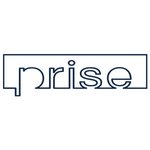Description

OneShield Policy

PROMOS
Comprehensive Overview: OneShield Policy vs PROMOS
OneShield Policy and PROMOS are software solutions that cater to the insurance industry, but they serve somewhat different purposes and markets. Here's a comprehensive overview:
a) Primary Functions and Target Markets
OneShield Policy
- Primary Functions: OneShield Policy is a comprehensive policy administration system designed for insurance carriers. It covers the entire policy lifecycle, including quoting, underwriting, policy issuance, billing, renewals, and endorsements. It offers tools for product configuration, rating, and flexible business rules management, which make it adaptable to various insurance products and business models.
- Target Markets: The primary target market for OneShield Policy includes mid-size to large insurance companies, particularly those that offer complex commercial insurance products. It's also suitable for companies looking to streamline their operations via automation and digital transformation.
PROMOS
- Primary Functions: PROMOS is an insurance management solution that is more focused on smaller to mid-sized insurance companies and managing agencies. Its functions revolve around offering a user-friendly platform for policy, claims, and billing management. PROMOS tends to emphasize ease of use and rapid deployment, making it suitable for smaller entities or those new to comprehensive software management systems.
- Target Markets: Smaller insurance providers, insurance agencies, and brokers looking for an integrated system to manage their operations efficiently. It may also appeal to startups in the insurance sector due to its more straightforward interface and lower overhead.
b) Market Share and User Base
-
OneShield Policy: Being a robust solution for larger and more complex insurance operations, OneShield Policy tends to have a strong presence among larger insurance carriers. Its market share is significant in the commercial insurance space, where companies need customizable and scalable solutions. The user base is generally composed of established insurance companies with significant IT budgets and a need for flexible policy management.
-
PROMOS: PROMOS, with its focus on smaller firms and its user-friendly approach, captures a different segment of the market, which includes smaller agencies and startups. Its market share might be smaller compared to OneShield Policy because it targets a niche, but it has a dedicated user base among entities that prioritize ease of use and affordability over the extensive features required by larger carriers.
c) Key Differentiating Factors
-
Scalability and Customization: OneShield Policy offers greater scalability and customization options, making it suitable for larger companies with complex needs. It allows extensive configurations and supports a wide range of insurance products.
-
Ease of Use and Implementation: PROMOS places a higher emphasis on ease of use, rapid deployment, and cost-effectiveness, which is beneficial for smaller operations and those with less extensive IT resources.
-
Target Market Needs: OneShield Policy's comprehensive toolset is ideal for companies needing in-depth policy management features and those operating in several regions or markets. PROMOS caters more directly to entities that require straightforward solutions and rapid returns on investment.
-
Technology and Integration: OneShield Policy might offer more advanced integration capabilities with legacy systems and a broader range of third-party services, given its appeal to larger companies. PROMOS may have more limitations in this regard but compensates by offering a seamless experience for smaller setups.
In conclusion, while both OneShield Policy and PROMOS provide essential policy management functions, they cater to different segments of the market and have their unique advantages. OneShield Policy is suited for larger, more complex insurance operations, while PROMOS is ideal for smaller, nimble companies seeking an affordable and straightforward solution.
Contact Info

Year founded :
Not Available
Not Available
Not Available
Not Available
Not Available

Year founded :
1990
Not Available
Not Available
Italy
Not Available
Feature Similarity Breakdown: OneShield Policy, PROMOS
As of my last update, I don't have access to explicit product details for specific applications like OneShield Policy and PROMOS, but I can provide a generic framework on how you might analyze and compare software solutions in the insurance policy management domain. You would need to consult the respective product documentation or vendor resources for precise details.
a) Core Features in Common
-
Policy Administration: Both systems likely offer functionalities for creating, endorsing, and renewing insurance policies.
-
Claims Management: Both platforms may include features to manage and process insurance claims, though the depth and user interface can vary.
-
Billing and Invoicing: Automated billing processes for premiums and handling of invoices are common in policy management software.
-
Regulatory Compliance: Ensuring that all processes are compliant with industry regulations and standards is a staple feature in these systems.
-
Underwriting Workflows: Support for underwriting processes, including risk assessment and policy approval.
-
Reporting and Analytics: Tools to generate reports and perform analytics on policy, claims, and related financial data.
-
Customer Relationship Management: Integrations to manage customer interactions and maintain client data.
-
Document Management: Secure storage and management of policy-related documents.
b) User Interface Comparisons
-
Design and Usability: Both products are likely designed with the user in mind, but the aesthetic and usability can differ significantly based on design philosophy and target audience. For instance, ease of navigation, intuitive layouts, and quick access to essential features can be points of differentiation.
-
Customization: Some platforms provide a higher degree of customization in terms of dashboards, reporting formats, and process workflows which can affect user satisfaction and productivity.
-
Integration: The ability to integrate with other systems (e.g., CRM, third-party applications) and how this integration is presented in the interface can influence the overall user experience.
-
Mobile Accessibility: If either product offers a mobile application or a responsive design, it would impact how users interact with the software across devices.
c) Unique Features
-
OneShield Policy might offer unique features like open architecture allowing for more straightforward customization or specific market-focused functionalities (e.g., workers' compensation, specialty insurance lines).
-
PROMOS might differentiate itself with specialized capabilities in promotional insurance schemes or robust marketing and customer acquisition tools tailored for the insurance industry.
To get precise information, it would be necessary to compare the most recent product literature or reach out directly to the vendors for demos and detailed feature lists.
Features

Customer Service
Billing and Payments
Policy Administration
Claims Management
Underwriting Management

Campaign Management
Analytics and Reporting
Integration and Automation
Targeting and Segmentation
User-Friendly Interface
Best Fit Use Cases: OneShield Policy, PROMOS
OneShield Policy and PROMOS are both software solutions designed to streamline and enhance business operations, but they cater to different needs and scenarios. Here's how they fit into various use cases and industries:
a) OneShield Policy
Target Businesses/Projects:
- Insurance Providers: OneShield Policy is specifically designed for the insurance industry. It is an ideal choice for insurance providers looking to modernize and streamline their policy management processes.
- Various Insurance Lines: It supports a wide range of insurance lines including personal, commercial, life, health, and specialty insurance, making it versatile for companies that offer diverse insurance products.
- Companies Needing Customization: Businesses that require highly customizable and configurable solutions to meet unique policy management needs will benefit from OneShield Policy.
- Enterprises Looking for Scalability: Large insurance companies or those with aspirations for growth and expansion in their policy offerings find OneShield's robust and scalable architecture particularly appealing.
Use Case Scenarios:
- New Policy Launches: For insurance companies frequently launching new products, OneShield provides the flexibility to configure new product lines quickly.
- Regulatory Compliance: Insurance firms need to adapt quickly to regulatory changes, and OneShield Policy supports rapid configuration adjustments to ensure compliance.
- Operational Efficiency: Firms aiming to improve their policy administration efficiency by reducing manual processes and errors.
b) PROMOS
Preferred Scenarios:
- Real Estate Management and Development: PROMOS is ideally suited for the real estate industry, where property management and development require comprehensive IT solutions.
- Facility Management Services: Companies that manage large facilities or need software solutions for extensive property portfolios benefit from PROMOS.
- Construction Companies: Firms involved in construction projects needing integrated project management solutions often find PROMOS advantageous.
- Businesses Requiring ERP Solutions: Companies seeking robust Enterprise Resource Planning (ERP) solutions with a focus on property-related functions would find PROMOS fitting.
Use Case Scenarios:
- Financial and Property Management: Real estate firms looking for unified solutions to handle financial operations, tenant management, and property maintenance.
- Project Planning and Execution: Companies in need of detailed project planning, monitoring, and execution tools tailored for construction and development projects.
- Data-Driven Decision Making: Organizations aiming to leverage detailed analytics for strategic decision-making in property investments and management.
d) Catering to Different Industry Verticals and Company Sizes:
-
OneShield Policy:
- Industry Vertical: Predominantly focused on the insurance industry.
- Company Sizes: Suitable for mid-sized to large insurance companies. Its scalability makes it a fit for firms with a high volume of policy operations and those intending to expand their insurance offerings or customer base.
-
PROMOS:
- Industry Verticals: Real estate, construction, and facility management predominantly.
- Company Sizes: This solution is scalable for medium to large enterprises that manage significant real estate portfolios or are involved in complex construction projects. It also caters to businesses requiring comprehensive ERP systems specific to property management.
Both OneShield Policy and PROMOS are robust solutions tailored to meet the specific needs of their respective industries, ensuring enhanced operational efficiency and scalability as per the business requirements.
Pricing

Pricing Not Available

Pricing Not Available
Metrics History
Metrics History
Comparing undefined across companies
Conclusion & Final Verdict: OneShield Policy vs PROMOS
To provide a detailed conclusion and final verdict for OneShield Policy and PROMOS, we need to evaluate various aspects including their features, usability, cost, scalability, customer support, and user satisfaction. Based on these factors, here's a structured analysis:
a) Considering all factors, which product offers the best overall value?
Best Overall Value: It would depend significantly on the specific needs of the organization considering these products.
- OneShield Policy typically offers robust capabilities for businesses that require comprehensive policy management with extensive customization and scalability.
- PROMOS might be better suited for organizations focusing on promotion management, offering flexibility and targeted promotion strategies.
If the primary need is sophisticated policy management with extensive industry application, OneShield Policy might offer better value. Conversely, if the emphasis is on marketing and promotions, particularly within retail or similar sectors, PROMOS could provide the best value.
b) Pros and Cons of Choosing Each Product
OneShield Policy:
-
Pros:
- Highly customizable and scalable for large enterprises.
- Strong integration capabilities with existing systems.
- Proven track record with extensive policy management features.
- Comprehensive support for compliance and regulatory needs.
-
Cons:
- Can be costly for smaller organizations or those needing fewer features.
- Implementation might be complex and time-consuming.
- May require significant training for users unfamiliar with advanced policy management tools.
PROMOS:
-
Pros:
- Specializes in promotions management, ideal for marketing teams.
- User-friendly interface with straightforward implementation.
- Cost-effective for businesses primarily needing promotional management.
- Quick adaptability to changing promotional strategies.
-
Cons:
- May not have adequate features for comprehensive policy management.
- Limited scalability compared to broader-focused solutions like OneShield Policy.
- Might not fully integrate with complex existing systems beyond promotional needs.
c) Specific Recommendations for Users Deciding Between OneShield Policy vs PROMOS
-
Identify Primary Needs: Clearly define the primary objective you are trying to achieve. If policy management is your primary focus, OneShield Policy is likely the better choice. For promotion-centric objectives, PROMOS is more suitable.
-
Evaluate Total Cost of Ownership: Consider not only the initial implementation costs but also ongoing maintenance, training, and potential upgrades.
-
Scalability & Future Growth: Consider future needs and choose a solution that can scale accordingly. OneShield is often better for scaling, while PROMOS is advantageous for focused, tactical use.
-
Trial and Demos: Engage in trials or live demonstrations of both products to understand their interfaces and how they can be integrated into your existing workflows.
-
Vendor Support and Community Feedback: Look into the level of customer support and user community feedback for each product, as this can significantly influence post-implementation satisfaction and issue resolution.
In conclusion, the decision between OneShield Policy and PROMOS should be grounded in an understanding of your organization’s core needs, growth trajectory, and budgetary constraints. Each product excels in specific areas, and the best choice is the one that aligns most closely with your strategic goals.
Add to compare




